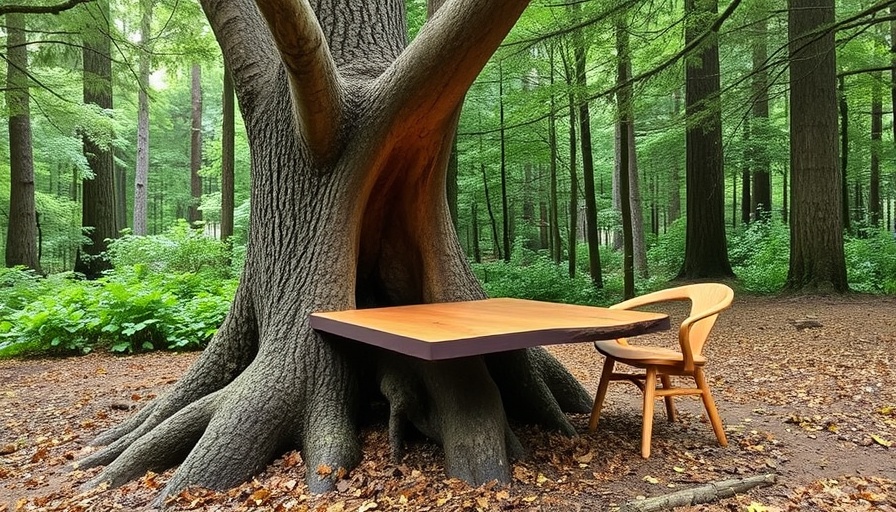
Redefining Comfort: A New Era of Timber Furniture
As more of us embrace remote working, creating an efficient and comfortable workspace is vital. With innovative solutions popping up, Earth to People has pioneered an exciting approach to timber furniture by binding materials with tree sap, showcasing an inspiring blend of sustainability and functionality. This unique method not only enhances the durability of furniture but also minimizes the need for synthetic adhesives, making it a greener choice for eco-conscious remote workers.
The Science Behind Tree Sap as an Adhesive
Using tree sap as a binding agent is a testament to nature's ingenuity. Traditionally, many furniture pieces rely on chemical adhesives that can release harmful VOCs (volatile organic compounds) into the air. Tree sap, in contrast, is a natural product that can provide a strong bond without compromising indoor air quality, which is essential for those setting up home offices.
Design Meets Functionality
Earth to People is not only pushing the boundaries of sustainability but also focusing on ergonomics in design. Their timber furniture incorporates sleek lines and adaptive structures, ensuring that remote workers maintain productivity and comfort. As an ergonomics specialist, I find this combination of design and efficiency crucial for our evolving work habits. When selecting furniture, consider how each piece can impact your posture and overall workspace flow.
Benefits of Choosing Natural Materials
In addition to being eco-friendly, natural materials like those used by Earth to People can create a calming atmosphere, significantly influencing your mental well-being. Research indicates that wood elements in a workspace can reduce stress levels and enhance focus. For digital nomads, who often juggle between home and various travel locations, a balanced workspace can help maintain productivity while offering a sense of relaxation.
Creating Your Ideal Remote Workspace
When designing a workspace, consider the following tips:
- Select Ergonomic Furniture: Invest in items that provide proper support for long working hours.
- Embrace Natural Light: Position your desk near a window to benefit from daylight.
- Incorporate Greenery: Adding plants can improve air quality and create a more inviting space.
- Use Colors Wisely: Choose soothing colors that promote calmness and concentration.
Future Insights: The Rise of Eco-Conscious Design
As remote work becomes increasingly common, the furniture industry is adapting to meet new needs. The success of Earth to People’s tree sap furniture could influence larger brands to rethink their materials and manufacturing processes, paving the way for a surge in eco-conscious designs. This trend not only caters to the environmental concerns of younger generations but also underlines the importance of sustainability in our daily lives.
Final Thoughts: Invest in Your Comfort and Health
Understanding the materials and designs that support your health and productivity is essential as more people transition to remote work. Choosing furniture that prioritizes sustainability not only benefits the environment but fosters a more comfortable work environment. Embrace this opportunity to invest in pieces that reflect your values and enhance your well-being.
Ready to transform your workspace with eco-friendly timber furniture? Explore options that resonate with you and take the first step toward creating a harmonious and productive remote work environment!
 Add Row
Add Row  Add
Add 




Write A Comment